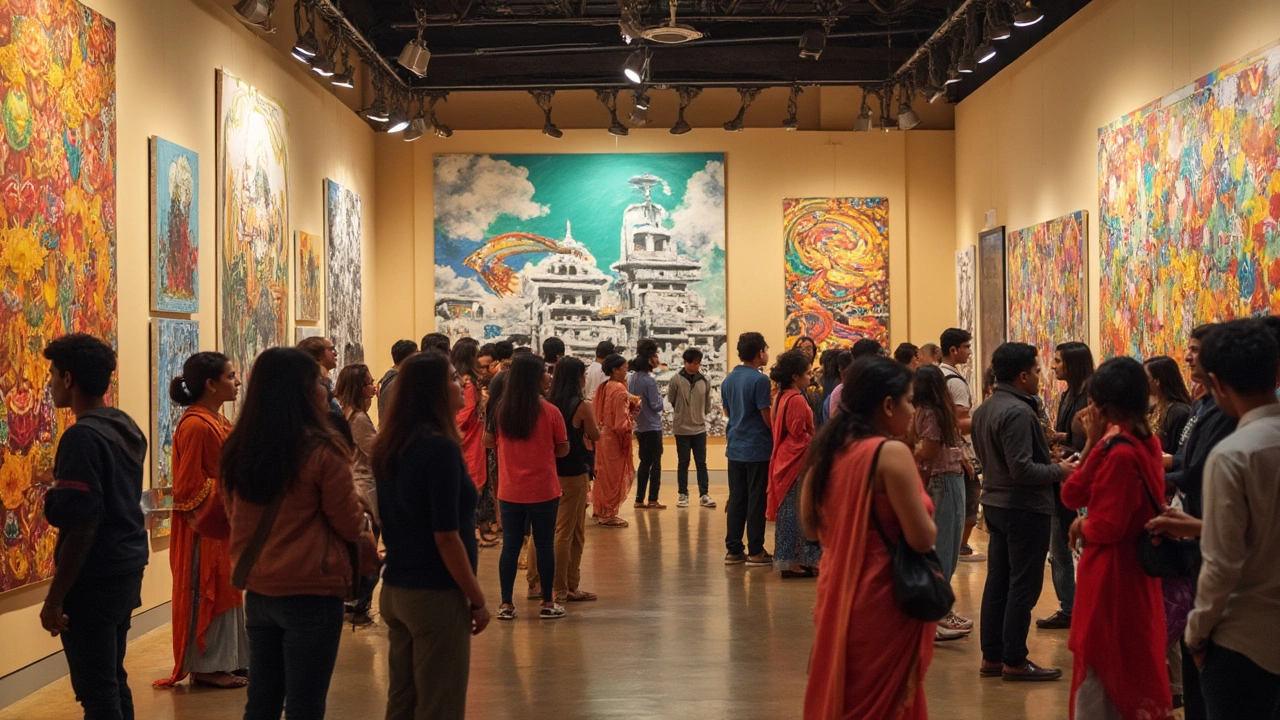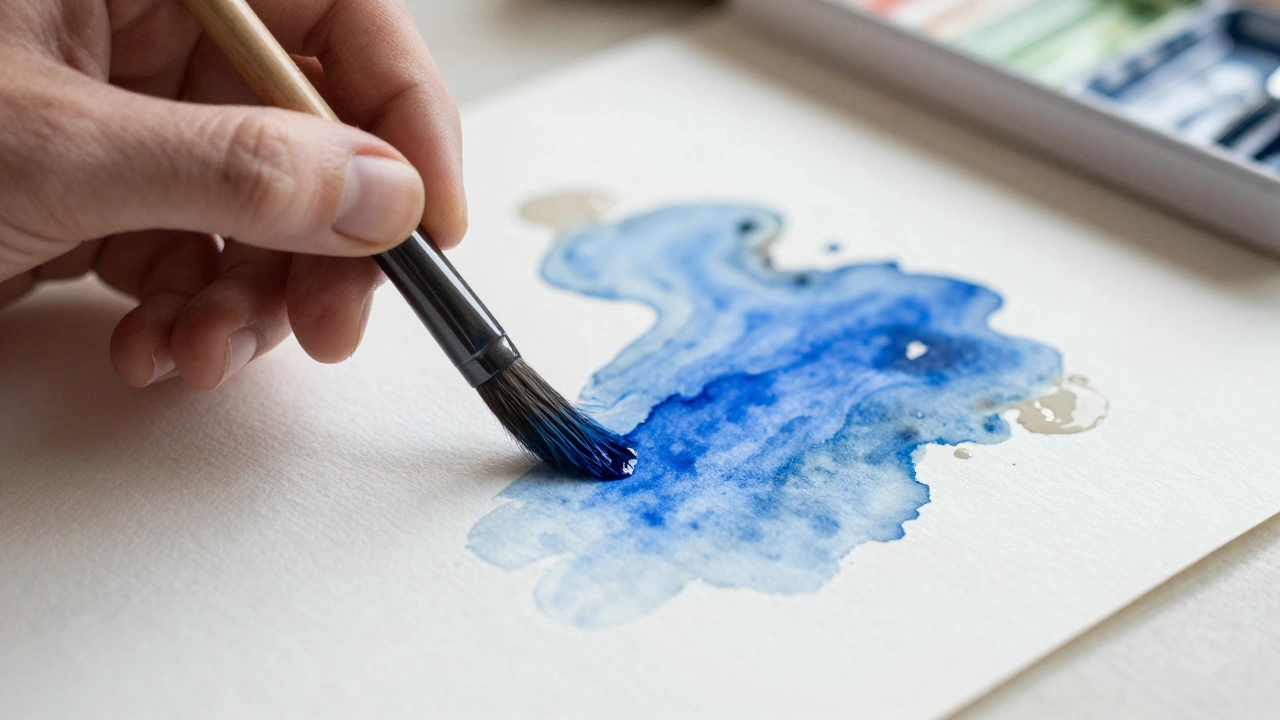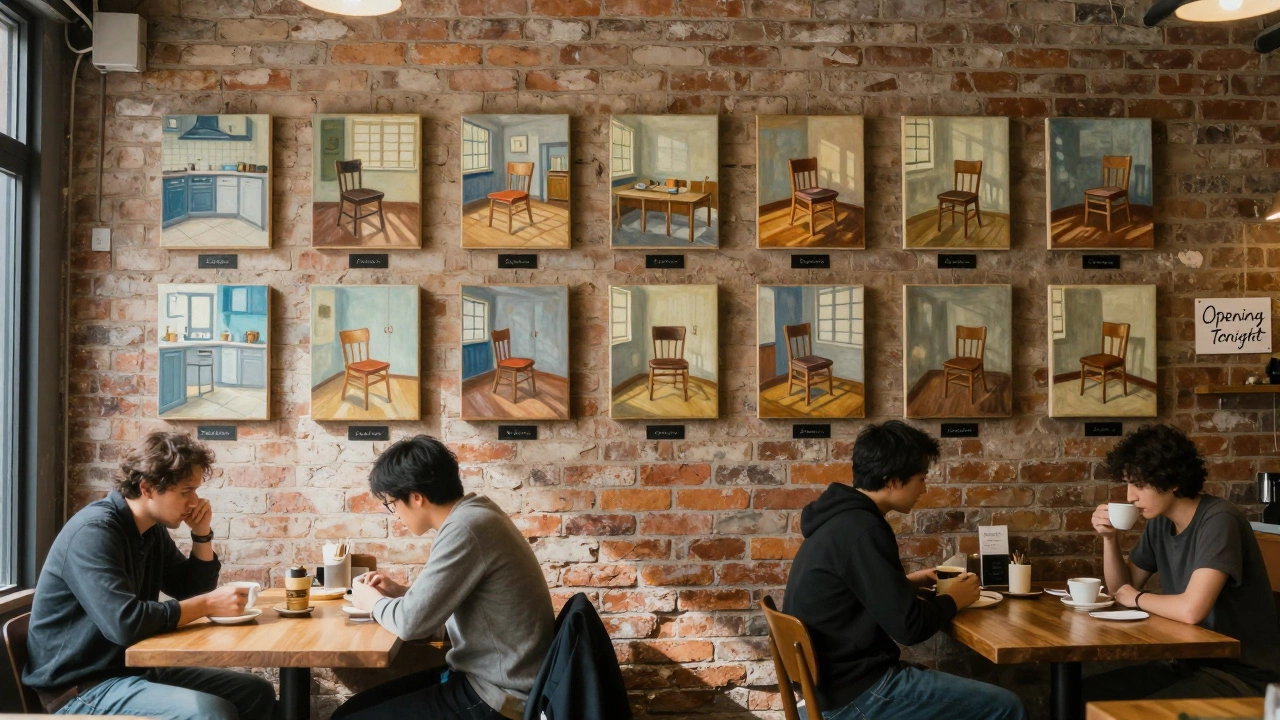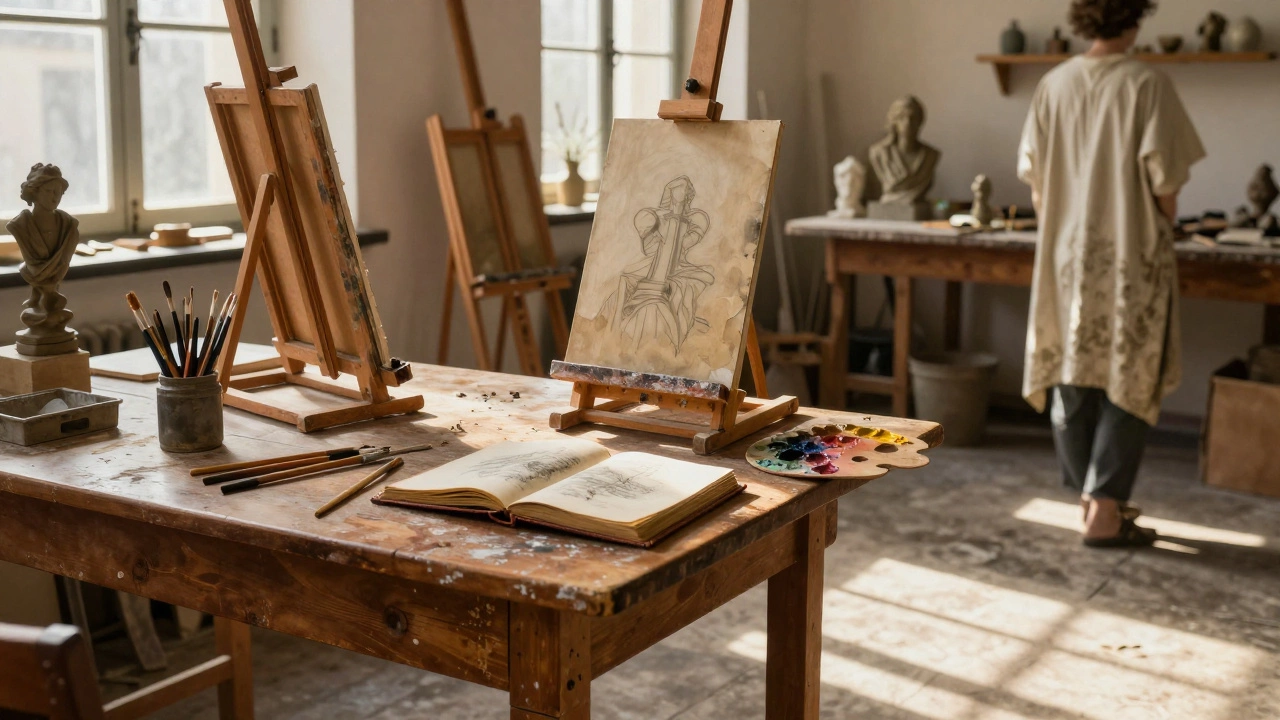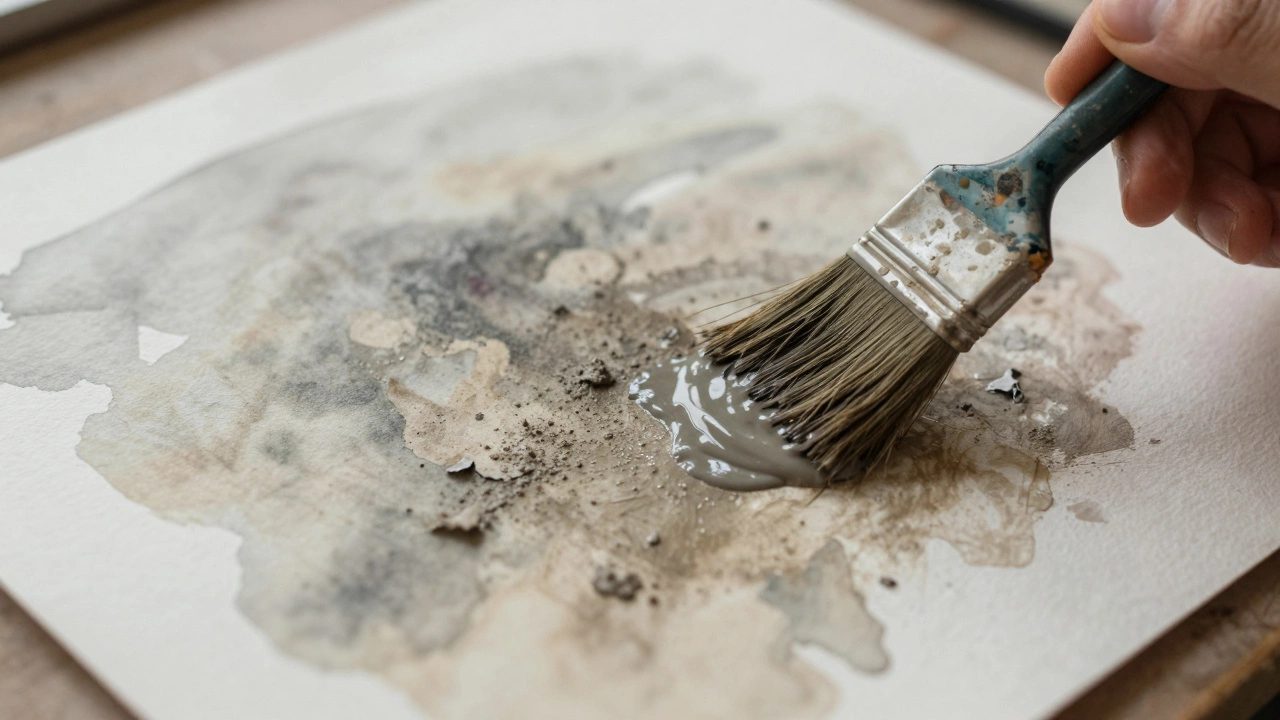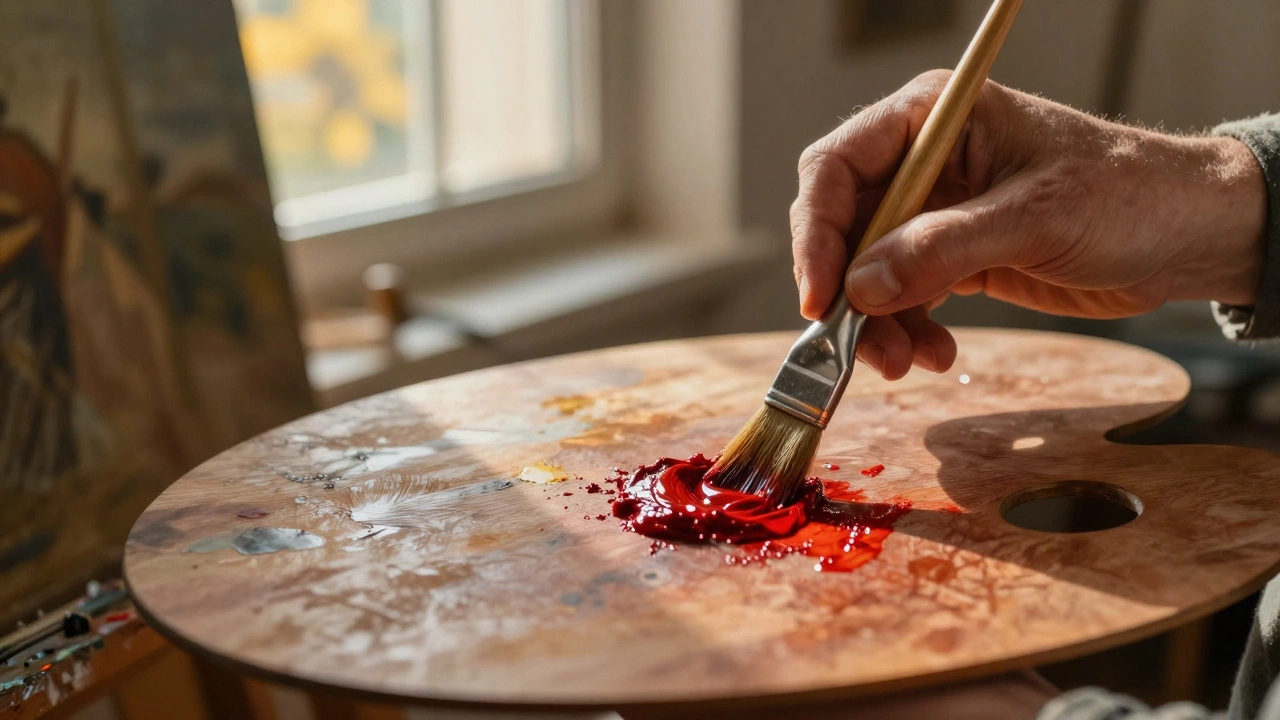Modern art often leaves people scratching their heads. Ever stood in front of an abstract piece, thinking, 'What does this even mean?' You're not alone. Modern art isn't just about pretty pictures; it's about provoking thoughts and emotions. But the burning question is—what's the purpose of it all?
Art has always been a way for people to express themselves. In the modern era, however, this expression took a leap. Suddenly, art wasn't bound by strict rules. Instead, it became a playground for new ideas. Artists began using unconventional methods to spark conversations. This shift wasn't just about aesthetics; it was a rebellion against the status quo.
- Unpacking Modern Art
- Art as a Conversation Starter
- Challenging the Status Quo
- Reflecting Society
- Personal Impact and Interpretation
Unpacking Modern Art
Modern art can seem mind-bending, but it's really about breaking away from tradition to explore new frontiers. The 20th century marked a huge shift as artists started breaking away from conventional techniques. This wasn't a slow evolution; it was more like a creative explosion. Think Picasso and his fragmented reality or Jackson Pollock's energetic drips and splatters. These names are synonymous with modern art because they dared to step outside the box.
What's the deal with non-traditional materials and methods? Back then, using anything other than canvas and oil paints might have seemed nuts. But modern artists embraced everything from everyday objects to video, smashing the old-school boundaries. This approach makes modern art feel super relevant—it mirrors the diversity and fast pace of our world.
So, where do you find modern art? Museums like MoMA in New York or Tate Modern in London house some of the most provocative pieces. These institutions aren't just holding art; they're keeping conversations alive. Modern art sparks curiosity and debate, making us question our own interpretations and beliefs.
Here's a quick look at the kinds of modern art phases:
- Abstract Expressionism: Born in the 1940s, all about raw emotion over form—Pollock nailed this with his wild canvases.
- Pop Art: Think Warhol's soup cans. This style captures everyday life and culture, often with a twist of irony.
- Minimalism: The 'less is more' philosophy focusing on simplicity and form, with artists like Donald Judd leading the charge.
- Conceptual Art: It's not only what you see but the idea behind it that defines the art. Marcel Duchamp's ready-mades challenged what art could be.
Art as a Conversation Starter
Ever walked into an art exhibition and found yourself debating a piece with friends? That's exactly what modern art is designed to do—it gets people talking. These artworks often bring up topics we don’t usually discuss. When you see a striking piece, whether you love it or hate it, it usually stirs up emotions. And that’s where the real magic happens.
Take, for instance, the legendary work of Banksy. His pieces often pop up out of nowhere, and before you know it, people worldwide are caught up in discussions about social issues. It's not just graffiti; it's a statement that ignites dialogue.
Art That Pushes Boundaries
Modern art often tackles controversial or taboos topics. Back when Marcel Duchamp displayed a urinal as art in 1917, it shocked everyone. Suddenly, the definition of what could be considered art expanded. This move opened countless doors for artists to explore and question societal norms.
Moreover, the rise of technology has seen digital artists like Beeple create pieces that fetch millions and spark debates on the value and definition of contemporary art. Beeple's sale of a digital collage for $69 million in 2021 marked a pivotal moment, proving art's role in the ever-changing digital landscape.
From Galleries to the Streets
Art doesn’t always need to hang in a museum to be part of the conversation. Street art, murals, and installations often serve as cultural touchpoints. They are not just decorations; they tell stories and sometimes even challenge political views.
Take murals commemorating social movements. These public displays become platforms for discussion about critical cultural issues. Art galleries might curate these conversations in a more structured environment, but street art brings it directly to the people.
Modern art is more than just creative expression for the sake of it. It's a tool, pushing us to engage in crucial conversations and ultimately leading to a broader understanding of the world around us.

Challenging the Status Quo
Modern art is all about breaking the mold. Think about it—how often does art simply reflect what we already know? Instead, modern art often challenges us to see beyond the obvious. When artists decide to experiment and push boundaries, they're questioning established norms. It's like they're saying, 'Hey, look at things from another angle.'
One of the most famous examples? The rebellious Dada movement in the early 20th century. Artists like Marcel Duchamp decided that traditional standards weren’t cutting it. Duchamp's “Fountain,” a porcelain urinal turned art piece, asked the audience to rethink what art could be. Bold move, right?
Why So Bold?
It's not just about making a statement; it’s about inviting dialogue. By challenging what we accept as 'normal,' modern art opens up a space for discussion and reflection. Remember the turbulence of the 1960s? Artists mirrored the era’s societal shifts, questioning everything from politics to gender roles. The idea was clear: nothing is off-limits.
Taking it Further
Today, contemporary art continues this tradition of challenge. Artists use various media to highlight important cultural and social issues. From digital installations to giant murals, modern works often tackle themes like climate change or identity. By pushing boundaries, they encourage us to think critically about the world we live in.
| Characteristic | Modern Art |
|---|---|
| Innovative Mediums | Yes, often combines digital and traditional forms |
| Targets Societal Norms | Always aiming for new perspectives |
So next time you walk through a gallery, remember that the crazy and weird are all part of a bigger conversation—challenging what’s known to discover what could be.
Reflecting Society
One of the biggest reasons modern art matters is its ability to mirror the world we live in. It's like a visual diary of our times. Artists take what's happening around them and turn it into a powerful visual statement. Think of it as a mirror showing us not just the good stuff, but also the things we might prefer to ignore.
Take for example, the works of Banksy, the mysterious street artist. He uses his art to make bold statements about consumerism, war, and politics. His pieces often pop up unexpectedly, just like the social issues they spotlight. It's a reminder that art can be a tool for activism, not just decoration.
Another example is how modern art addresses technology. Digital art is on the rise, bringing with it discussions about digital culture, privacy, and the impact of screens on our lives. Artists like Refik Anadol are merging art with artificial intelligence, creating pieces that explore the boundaries between man and machine. This pushes us to think critically about where society is headed.
If we delve into a specific societal concern, climate change, we'll notice a lot of modern art tackling environmental issues too. From installations made of recycled materials to performances on rising sea levels, art is echoing urgent calls for sustainability.
How Art Drives Awareness
Modern art doesn't just reflect; it educates. Take, for instance, the impactful 'Ice Watch' installation by Olafur Eliasson and Minik Rosing, where they placed chunks of Greenland ice in urban areas to visually demonstrate glacier melting.
Contemporary art also creates platforms for underrepresented voices. Women, minorities, and LGBTQ+ communities use art to share their stories, giving audiences a chance to walk in other people's shoes. This broadens perspectives and builds empathy—essential ingredients for societal progress.
In short, modern art isn't just about pretty visuals. It’s a partner in societal reflection, pushing us to see things from different angles. Through its lens, we confront our realities and, hopefully, find ways to improve them.
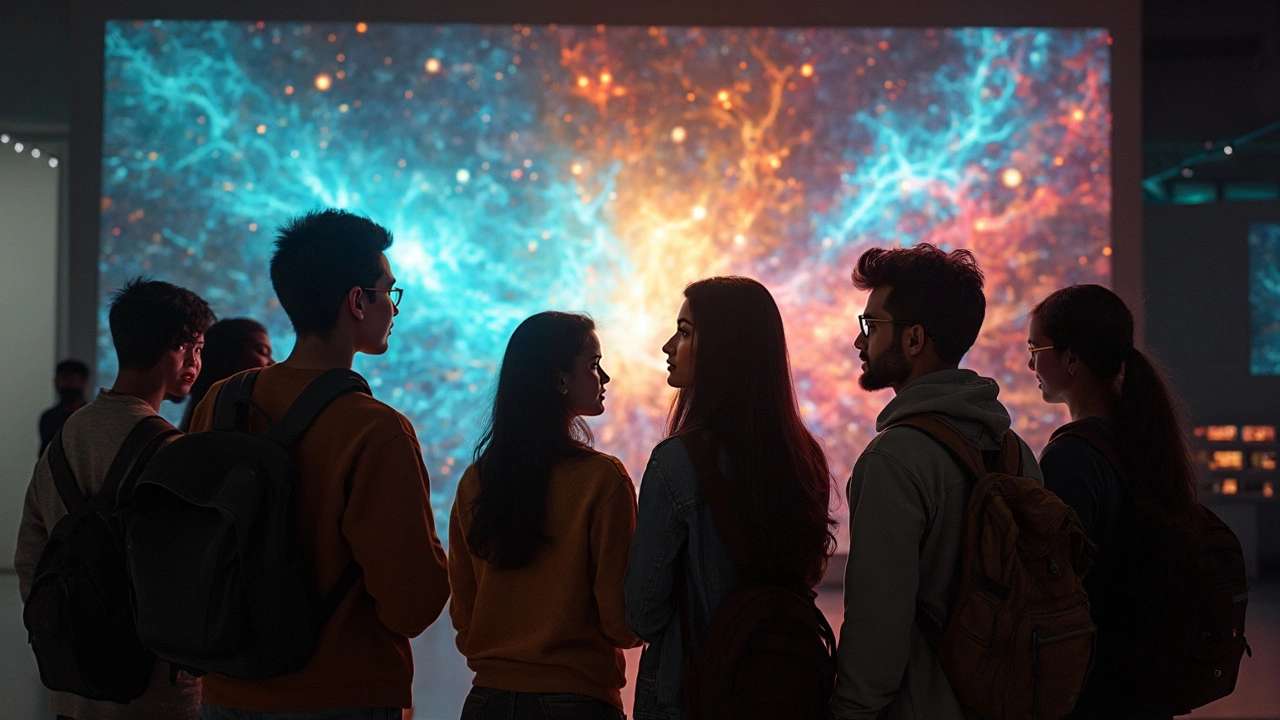
Personal Impact and Interpretation
The way we connect with modern art often varies from person to person. It's not just about liking or disliking a piece. It goes deeper—into how it makes us feel and think. That's what's fascinating about art; there are no right or wrong reactions. Your experience is yours alone, and that’s what makes it special.
When you stand in front of a piece, what do you see? Maybe it reminds you of something from your past, evokes an emotion, or even gets you pondering larger questions about life. In this way, modern art holds a mirror to our own thoughts and feelings. It's about personal interpretation, and everyone brings their own story to the artwork.
Art as Therapy
Modern art isn’t just for museums or galleries; it serves a unique purpose in our personal lives, too. Many people find solace and clarity through art, using it as a form of therapy. Studies show that creating or engaging with art can reduce stress and promote mental well-being. So, next time you're feeling overwhelmed, take a moment with some modern art—it might just lighten your load.
Bridging Perspectives
Art also has this amazing ability to bring people together. You and a complete stranger may stand before the same painting and see entirely different things. Those differences can lead to great conversations, opening your mind to perspectives you might never have considered. Contemporary art often tackles diverse themes—it's a great way to explore issues like identity, politics, and cultural shifts.
In short, the purpose of modern art isn't defined by the artist alone. It's a shared experience, molded by personal interpretation. That's what keeps art galleries buzzing with conversation, wonder, and even a little bit of debate. After all, isn’t the beauty of art in its ability to move and inspire us in unique ways?
